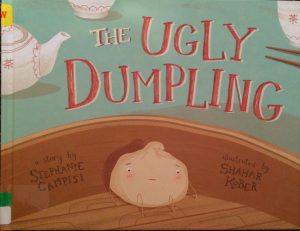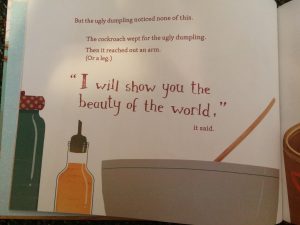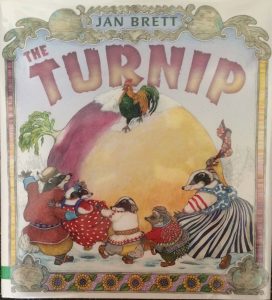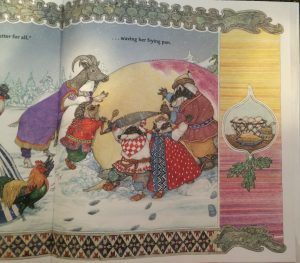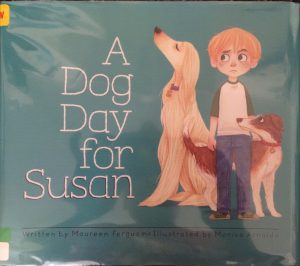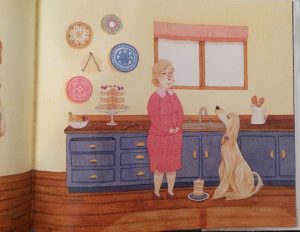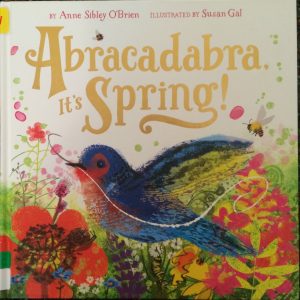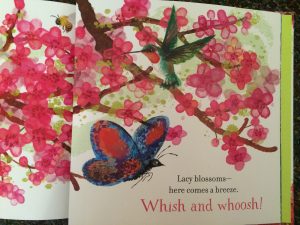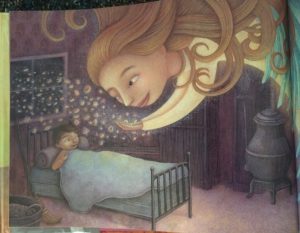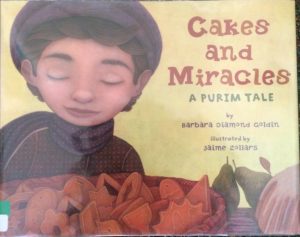Author: Stephanie Campisi
Illustrator/ Photographer: Shahar Kober
Publisher and Year: Mighty Media Kids, 2016
Number of Pages: 27 Pages
Diversity, Fiction, Dorning
Genre: Fantasy
The Ugly Dumpling is a storybook about a dumpling in a restaurant that struggles to fit in and find a friend. The dumpling befriends a cockroach and they find the “beauty of the world” together (Campisi, 2016).
Besides the unlikely friendship of a food (dumpling) and insect (cockroach), this story serves as a mirror for the audience to reflect on how people view diversity. In this story, the dumpling is ignored and excluded from participating in the restaurant’s business (no matter how hard it tried) because the dumpling looked different. Not until it befriends and goes on adventures with the cockroach, does it realize the beauty in being different. By the end of the story, the dumpling and cockroach find the power and confidence to accept whom the other is and walk away from those who do not appreciate their beauty in being different. As fantasized as the story and artwork is, this storybook serves as a window to all cultures to practice the virtue of acceptance. In regards to my understanding of culture, this story shares the message of the vital importance of acceptance because regardless of sex, religion, or gender, everyone wants to be included and wanted.
This book attempts to convey this message to such an extent that on the last page of the story is the quote, “Every dumpling needs a friend” (Campisi, 2016) with a website at the bottom of the page. After looking on the website, I found that it was Facebook campaign that promoted against stereotypes and labels of all groups of people (https://www.facebook.com/friendsofdumplings). This continued to further the message of understanding and acceptance of all kinds of people and that being “different” is a wonderful and unique concept. Perceptually, the images take up most of page, which shows that the artwork is more important than seeing the text the author wrote. At the same time, the images and words mirror one another, which allows the reader to visually see what the text is saying. The diversity of people in restaurant shows continuation of people accepting all kinds of people. Structurally, certain words and phrases are bolded or quoted to add emphasize on the theme of the story. For example, the words “beautiful”, “one”, and “own” highlight the importance of individuality. The facial expressions of dumpling change as it befriends the cockroach, showing that the dumpling is accepting its differences and beginning to love itself for whom it is. The main themes of this storybook are it is okay to be different, stay true to yourself, friends can be found in unlikely places, individuality, and do not judge by looks or first impressions.